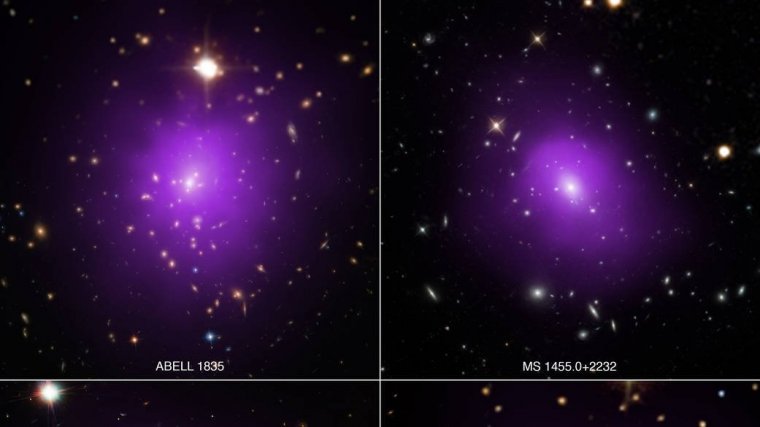| News / Space News |
"Russian Doll" Galaxy Clusters Reveal Information About Dark Energy
NASA | MAY 2, 2016
Astronomers have used data from NASA’s Chandra X-ray Observatory, ESA’s Planck and a large list of optical telescopes to develop a powerful new method for investigating dark energy, the mysterious energy that is currently driving the accelerating expansion of the universe.

Four galaxy clusters, part of a large survey of over 300 clusters used to investigate dark energy. ![]()
The technique takes advantage of the observation that the outer reaches of galaxy clusters, the largest structures in the universe held together by gravity, show similarity in their X-ray emission profiles and sizes. More massive clusters are simply scaled up versions of less massive ones.
By using these galaxy clusters as distance markers, astronomers can measure how quickly the Universe was expanding at different times since the Big Bang. According to Einstein’s theory of general relativity, the rate of expansion is determined by the properties of dark energy plus the amount of matter in the Universe, where the latter is mostly made up of unseen material called dark matter.
If the assumed cosmological parameters (e.g., the properties of dark energy or dark matter) are incorrect, then distant clusters will not appear to be similar, that is their sizes will be larger or smaller than expected. The cosmological parameters are then adjusted so that all of the different clusters, with different masses and different distances, appear to be similar. The process is akin to determining the unknown weight of an object by adding or subtracting known weights to a balance scale until the two sides balance.
These latest results confirm earlier studies that the properties of dark energy have not changed over billions of years. They also support the idea that dark energy is best explained by the “cosmological constant,” which Einstein first proposed and is equivalent to the energy of empty space.
YOU MAY ALSO LIKE



